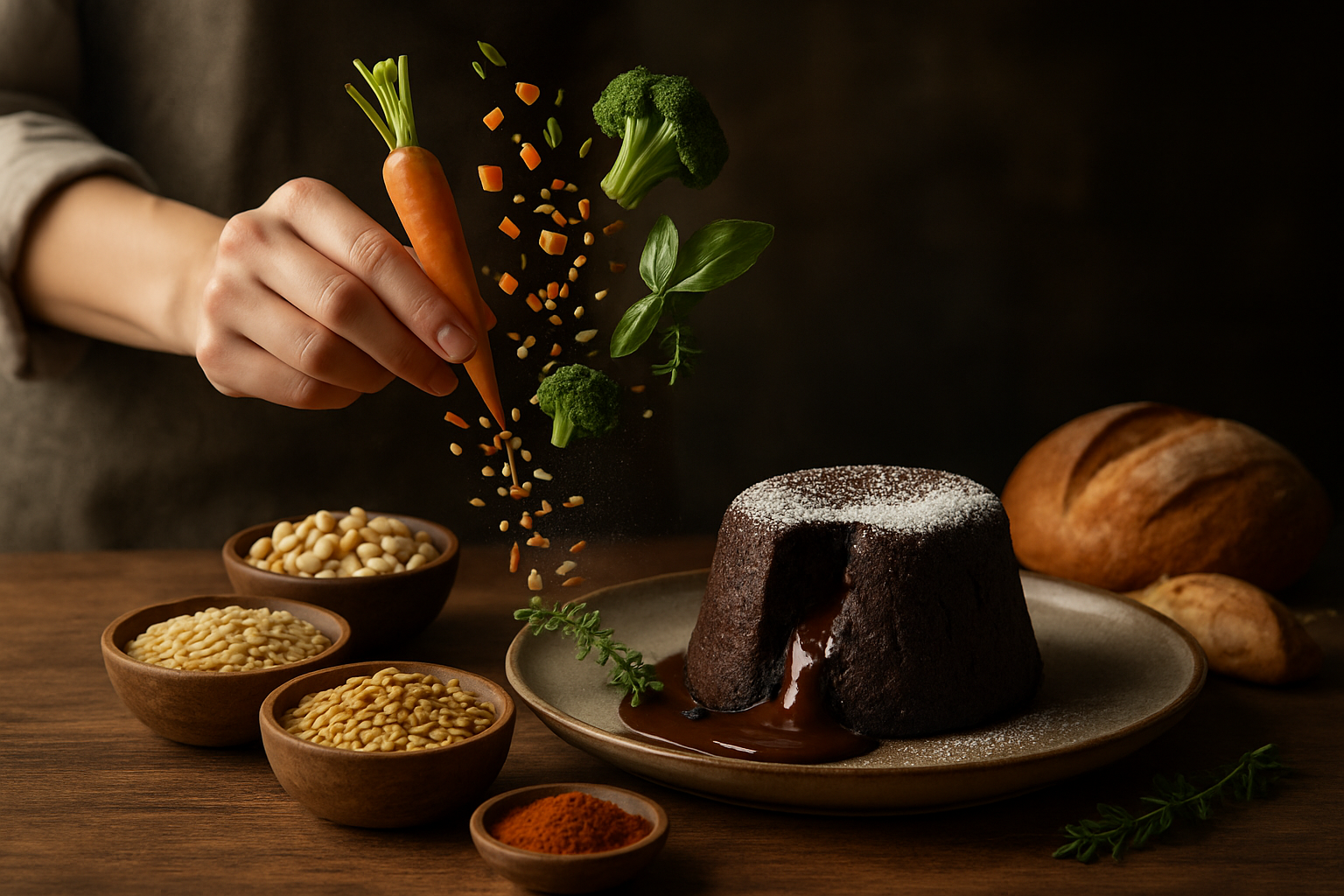Culinary Alchemy: Transforming Everyday Ingredients
Elevate your cooking game with the art of culinary alchemy. Discover how to turn humble pantry staples into gourmet masterpieces, impress guests with unexpected flavor combinations, and unleash your inner kitchen wizard. Get ready to embark on a journey of culinary transformation that will revolutionize your approach to cooking and dining.

Unlocking Flavor Potential
At the heart of culinary alchemy is the ability to unlock the hidden potential of ingredients. This often involves techniques that may seem counterintuitive at first but yield remarkable results. For instance, roasting vegetables like Brussels sprouts or cauliflower at high temperatures can transform their flavors, bringing out nutty and caramelized notes that are far removed from their raw counterparts. Similarly, the process of browning meat before slow-cooking not only enhances its appearance but also develops a complex depth of flavor through the Maillard reaction. By understanding these transformative processes, home cooks can take their dishes to new heights, turning even the most mundane ingredients into star components of a meal.
The Art of Unexpected Pairings
One of the most exciting aspects of culinary alchemy is the art of unexpected pairings. By combining ingredients that might seem incompatible at first glance, chefs can create dishes that surprise and delight the palate. For example, the addition of a pinch of salt to chocolate desserts enhances their sweetness and complexity. Similarly, pairing fruit with savory dishes – such as figs with prosciutto or pears with blue cheese – creates a harmonious balance of flavors that elevates the entire dish. These unexpected combinations challenge our preconceptions about food and open up new possibilities in the kitchen. Experimenting with such pairings not only expands our culinary horizons but also teaches us to trust our instincts and be bold in our cooking choices.
Texture Transformation Techniques
Texture plays a crucial role in our enjoyment of food, and mastering texture transformation is a key aspect of culinary alchemy. Techniques like spherification, made popular by molecular gastronomy, allow chefs to encapsulate liquids in delicate spheres that burst in the mouth. On a simpler level, the process of tempering chocolate transforms it from a dull, brittle substance into a glossy, snappy treat. Even something as basic as properly cooking pasta al dente can dramatically improve the texture and overall experience of a dish. By paying attention to texture and employing techniques to manipulate it, cooks can add an extra dimension to their creations, turning ordinary meals into multi-sensory experiences.
From Trash to Treasure: Upcycling Ingredients
Perhaps one of the most impressive feats of culinary alchemy is the ability to turn food scraps and byproducts into delicious ingredients. This concept of upcycling in the kitchen not only reduces waste but also leads to innovative and flavorful creations. For example, the whey left over from making cheese can be used to ferment vegetables or as a tenderizing marinade for meats. Vegetable peels and trimmings can be transformed into crispy chips or flavorful stocks. Even coffee grounds can find new life as a rub for meats or as a component in baked goods. By viewing all parts of an ingredient as potential culinary gold, chefs can create more sustainable and creative menus while discovering new flavors and textures.
Alchemical Tips for Culinary Transformation
-
Experiment with different cooking methods for the same ingredient to discover new flavors and textures
-
Use acids like lemon juice or vinegar to brighten and transform dishes
-
Incorporate fermented ingredients to add depth and complexity to your cooking
-
Try cooking fruits to bring out their natural sweetness and create unique savory applications
-
Explore different types of salts to enhance and vary the flavor profile of your dishes
-
Embrace the power of herbs and spices to completely change the character of a meal
-
Learn the art of seasoning throughout the cooking process, not just at the end
-
Master the technique of deglazing to create flavorful sauces from pan drippings
-
Understand the role of fat in carrying and enhancing flavors in your dishes
-
Practice layering flavors to create more complex and interesting culinary creations
In conclusion, culinary alchemy is about more than just cooking – it’s about transformation, creativity, and pushing the boundaries of what’s possible in the kitchen. By embracing these principles, home cooks and professional chefs alike can elevate their culinary creations, turning everyday meals into extraordinary experiences. As you embark on your own alchemical adventures in the kitchen, remember that the most important ingredients are curiosity and a willingness to experiment. With these tools at your disposal, you’ll be well on your way to creating culinary gold from the most unexpected sources.





